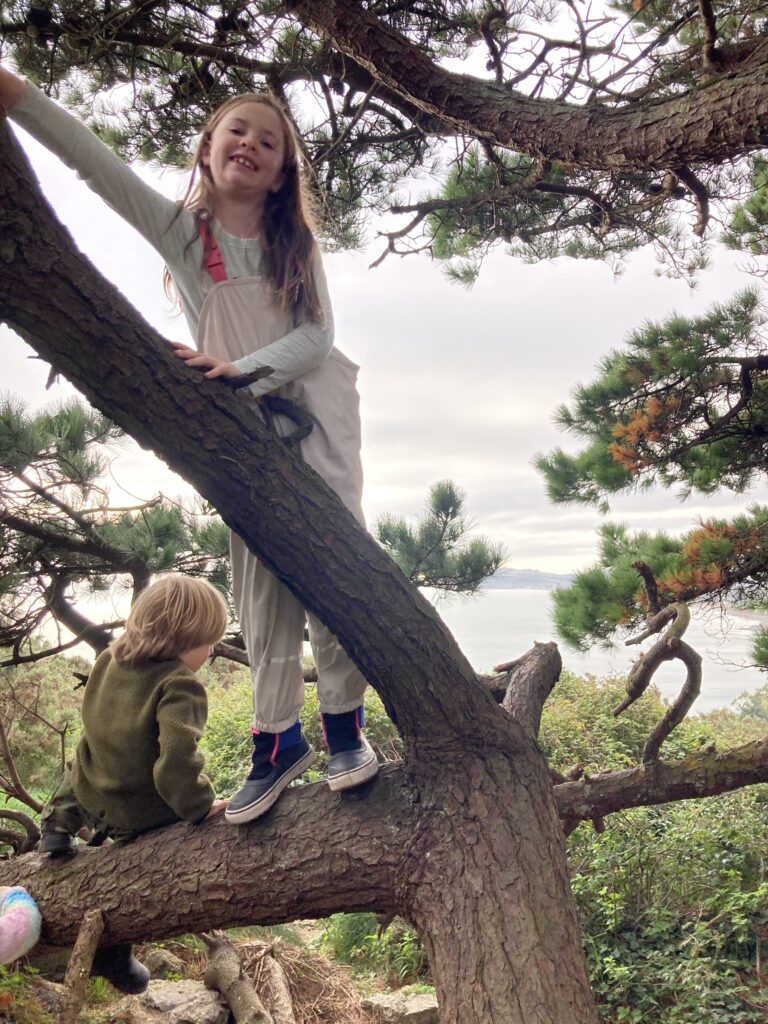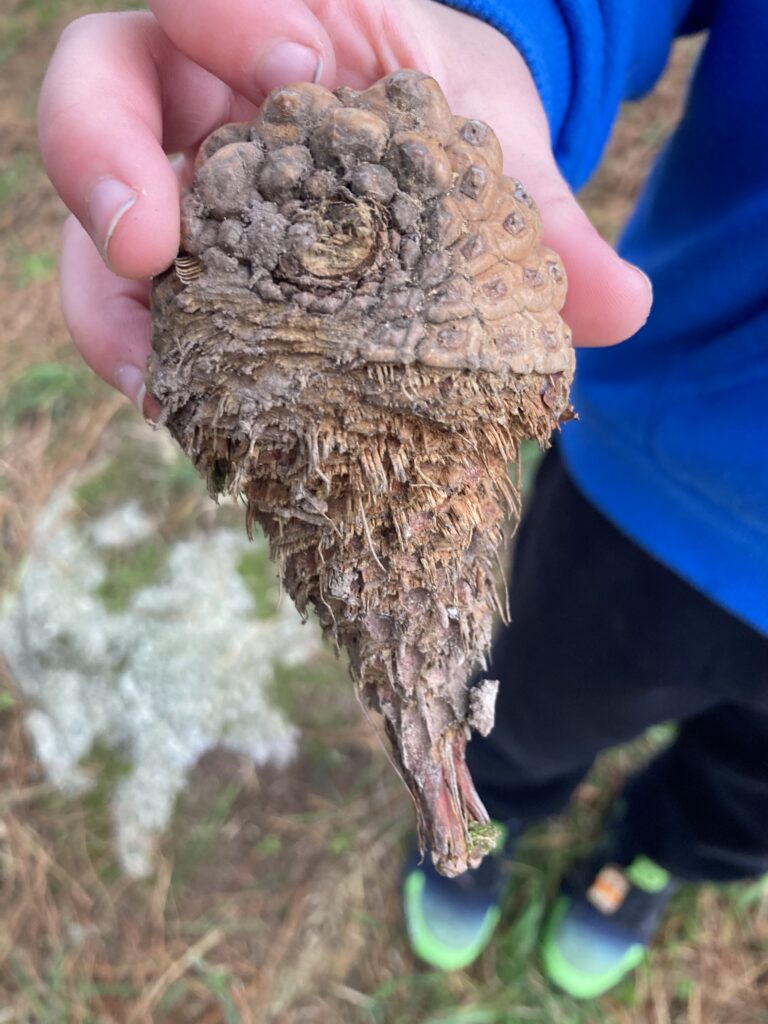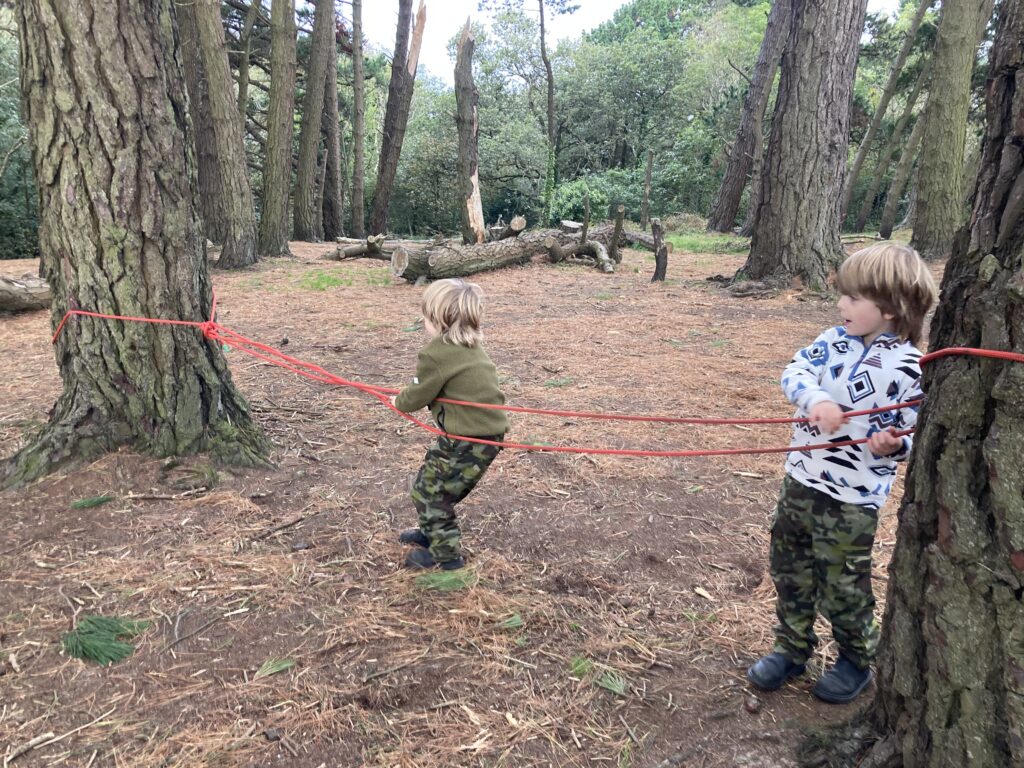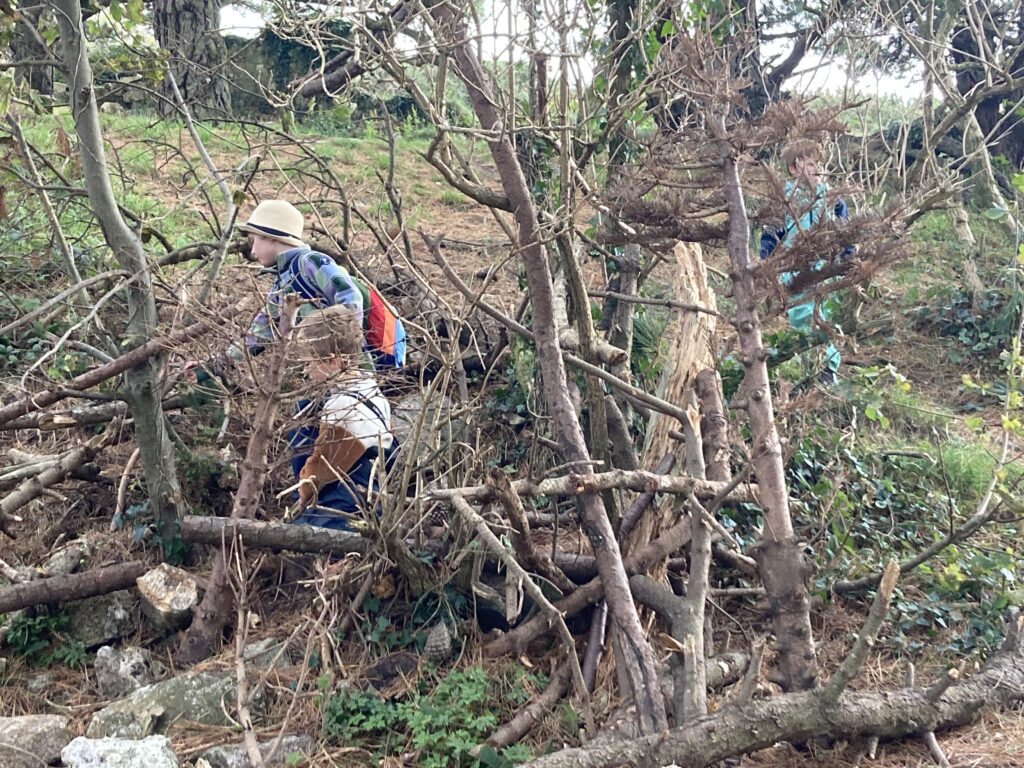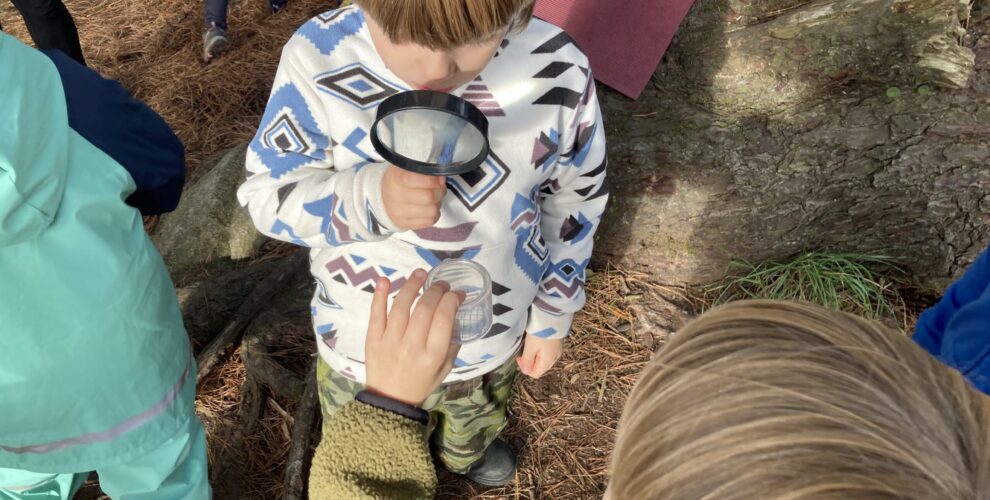As usual the class were shown a PowerPoint before arriving in the forest about badgers. This is a great way to learn about mammals that the children will rarely see as they are they are quietly hiding or asleep when the children are in the woods. Children who have seen one of the mammals have time to share where they have seen them. We can ask about the habitat, the time of day/night and season. We take time on our way to our base to wonder, look, listen and feel and share stories.

“I’m putting this pine cone under the mushroom to keep it dry.”

Wondering why some acorns have long stalks and others have short stalks.


The children loved new trees to climb and rocks that became tables.
Recording Badger Food
Today’s activity focused on discovering what badgers eat and learning about the tiny creatures that share their woodland home. Although badgers mainly feast on earthworms, they also enjoy slugs, insects, and other small invertebrates. With their sharp claws and keen noses, they’re excellent at sniffing out grubs hidden beneath the soil.
Our theme was Invertebrates — animals without backbones — including insects, butterflies, dragonflies, spiders, centipedes, beetles, slugs, snails, and worms. Before setting off, the children discussed what invertebrates they might find in the forest and shared discoveries from their walk to base camp.
Armed with magnifying glasses, pencils, and card, they explored the woodland floor, remembering to tread carefully, disturb habitats as little as possible, and return any logs or stones to their original places. Rotting logs proved perfect bug homes — damp, dark, and full of life. We found beetles burrowing, slugs and snails hiding beneath the moss, and delicate webs and cocoons that hinted at other unseen residents.
Using bug containers, the children gently collected a few creatures for closer observation. They were encouraged to look closely and ask questions like:
- What colour or pattern can you see?
- How many legs does it have?
- How does it move?
- Is it eating anything?
Finally, with pencils and card, the children recorded their discoveries through drawings. By sketching details and magnifying what they saw, they learned to notice shape, texture, and pattern — just like real nature scientists.
This hands-on exploration helped everyone appreciate the hidden world beneath their feet and understand more about the badger’s menu — and the rich ecosystem it depends on.
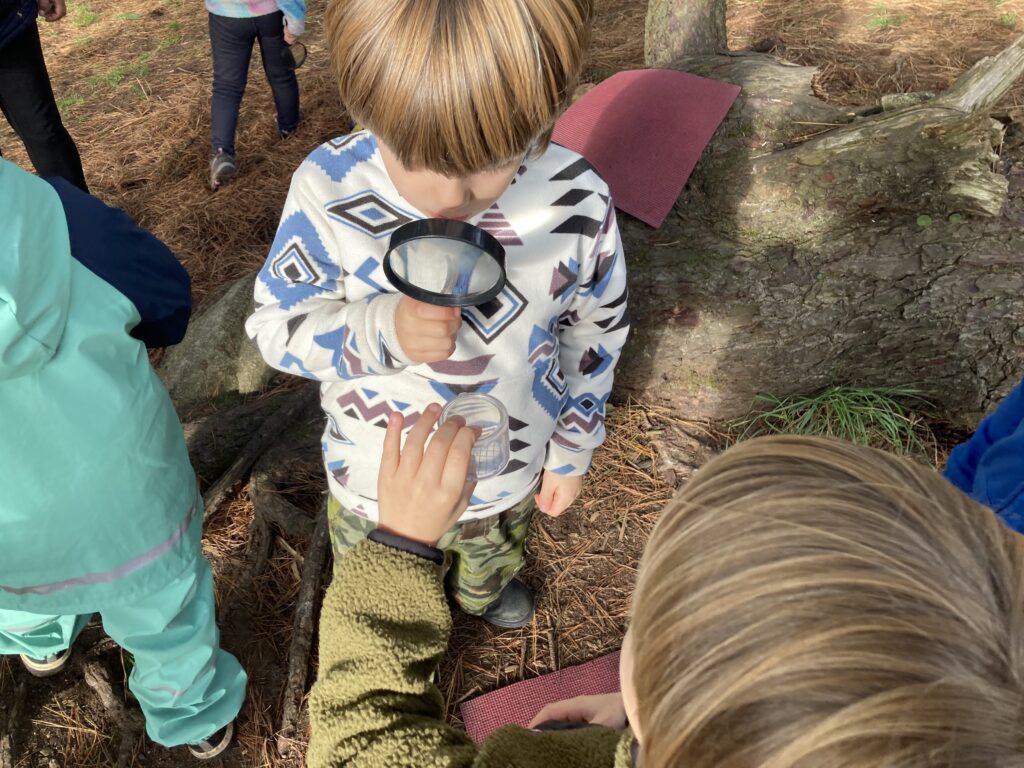
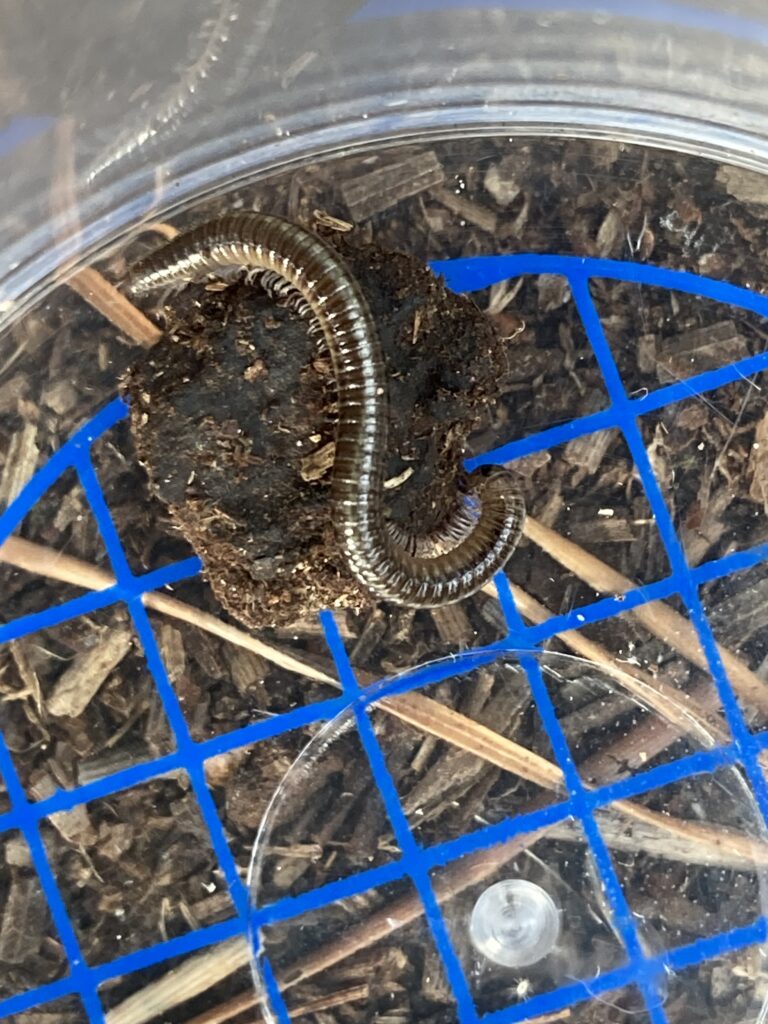
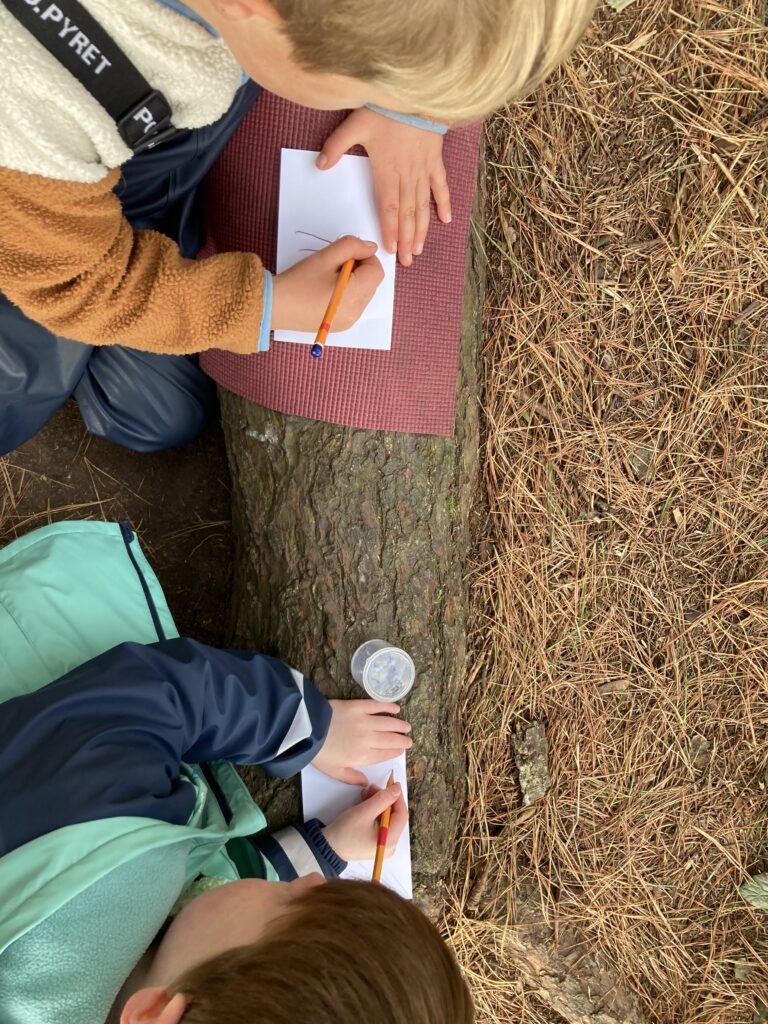
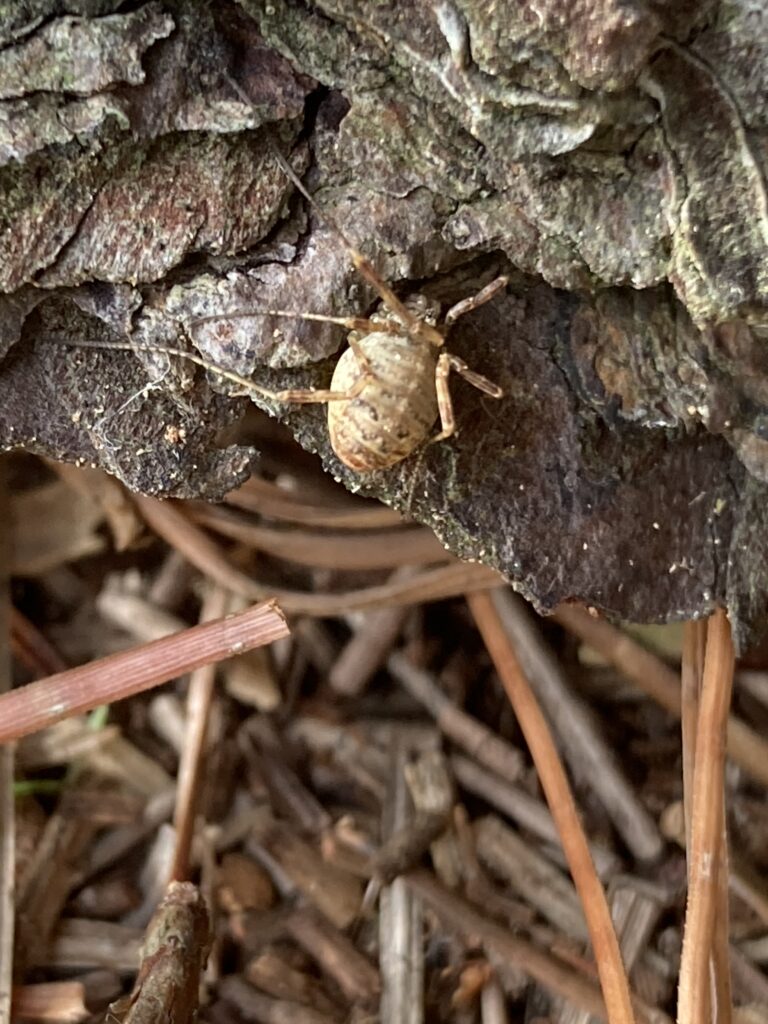
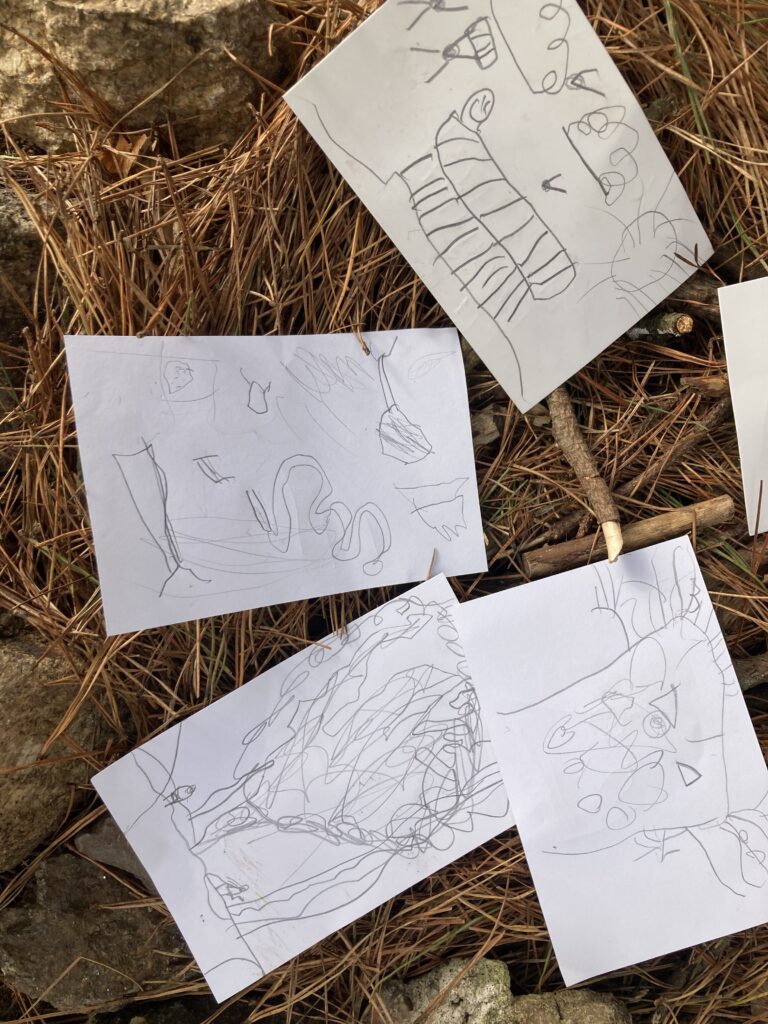









As always, there was plenty of choice and other rich learning happening throughout the session, with the activities naturally building on the children’s interests from previous weeks and led by their own curiosity. Some climbed trees, others found and shared nature’s curiosities, others constructed play with ropes whilst another group developed their den building.
